The Ultimate Beginner’s Guide to APC – PART 3
STEP 3: SEAL
In our previous post of this series, we discussed the grand world of distressing! If you haven’t had a chance to read it, we encourage you to take a look. We cover 3 different distressing techniques as well as the benefits of using Clay paint when wanting to distress or produce a more vintage look.
In this post, we’ll cover how to protect your piece after you’ve made it truly your own!
Once you’re happy with how your paint and distressing turned out, we highly recommend that you seal your piece! Why? It not only gives it a more finished, complete and professional look, but it also protects your piece from the elements. You do want your piece to hold up for the long term, don’t you?
There are a few different types of sealers you can use, but in this guide, we’ll recommend the most popular, and easiest sealer to use if you’re just starting out.
Don’t worry, we’ll also share some information on our other sealer options and finishes too!
Applying Top Coat Sealer
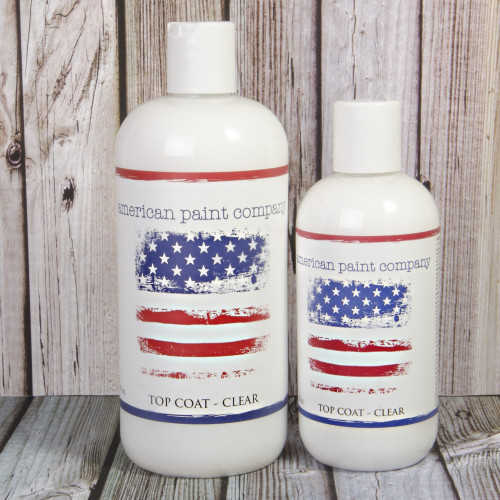
Top Coat Sealer
American Paint Company’s Top Coat is a durable sealer that goes on clear and leaves your piece with a professional shiny finish.
Recommended for ‘high traffic’ furniture like dining room tables, kitchen bar stools, kitchen cupboards, or other projects that need a more durable finish, the Top Coat is your best bet.
It’s easy to apply, goes on thin, and leaves a nice looking finish to your piece. As one of our most popular All Natural sealers, it’s also recommended for beginners as it is quite forgiving and doesn’t take much to get the hang of it. Simply add 2-3 thin coats to your finished piece and you’re good to go. And since it is all natural, feel free to finish off your piece indoors! You won’t get any strong intoxicating fumes from Top Coat!
Top Coat sealer can and is often used as a barrier coat for certain pieces. Use to cover pieces with a wax/oil finish for a fresh starting point. Also, apply a thin layer before applying Dark Wax or a glaze. Having a barrier coat in these instances prevents too much wax and glaze from being soaked up into your painted piece, providing more flexibility to personalize to your preferences.
When to use Hard Coat and Wax
APC carries other sealers in the form of Hard Coat and Vintage Antiquing Wax. Each has its distinctive use, but both provide protection to your projects.
Hard Coat

Hard Coat is a concentrated liquid sealer best used for maximum durability and strength. We recommend using Hard Coat on outdoor furniture projects such as patio furniture or your front door.
This sealer dries fast and can be a little more difficult to apply and work with than the Top Coat sealer. You might want to practice on a smaller project to get used to working with it first. However, if applied correctly it can act as a good sealer and leave a great looking shiny finish to your piece. Hard Coat applies clear with 1-2 coats for maximum durability.
Vintage Antiquing Wax
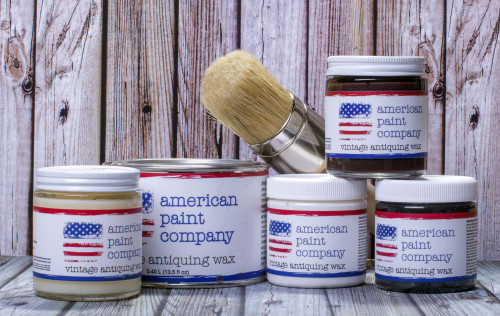
Vintage Antiquing Wax is another sealer APC carries. It is a completely all-natural sealer that leaves more of a professional matte finish and comes in four different shades; Clear, White, Dark, and Black. It can be used on furniture with fine finishes, like end tables, china cabinets. Or use on other furniture that doesn’t get a lot of ‘high traffic’.
If you are just beginning to paint furniture and don’t have a lot of experience, we don’t recommend using wax on your first project. Applying the wax takes a few extra steps, including applying the wax, taking off the excess wax, and buffing out the surface evenly.
Once you seal your project with wax, it will need a good 2-3 weeks to completely cure. Don’t worry, even though it goes on sticky like wax, it will harden over time.
Don’t forget that applying the wax should always be your final step. Once the wax has been applied we don’t recommend adding anything else. Paint, applying any other type of sealer, or trying to distress your project will just cause you headaches. If you want to continue to paint or distress your piece after using wax, lightly sand it off first.
Applying Finishes and Embellishments
Once you’re more comfortable with our Clay paint, and all-natural sealers, we hope you’ll try some of our other finishes and embellishments. APC carries glazes, Metallix paint, MICA powder, and Venetian Plaster!
Glaze
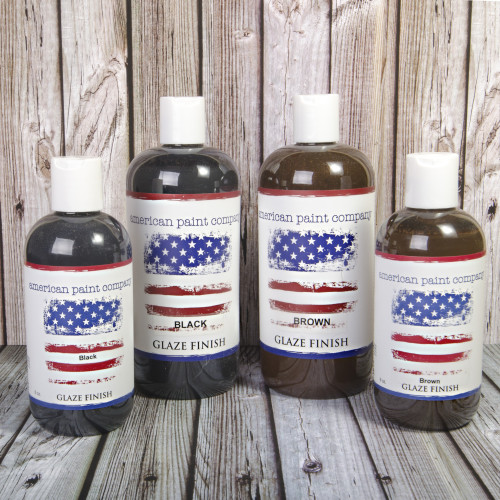
Available in Black and Brown, glaze provides a natural looking stain and is a great tool for darkening or ageing your paint job!
Metallix Paint
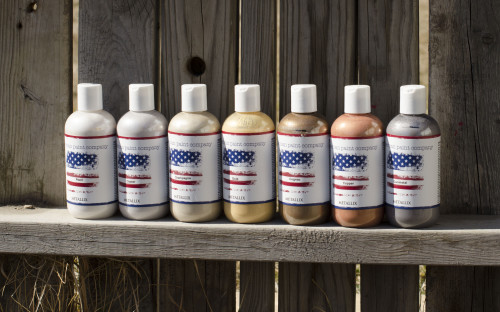
Pick up some Metallix paint if you want to add some shimmer to your projects. Available in 7 different colors, Metallix paints goes on translucent. This allows your original paint color to show through while adding some pizzazz to your piece.
MICA Powder
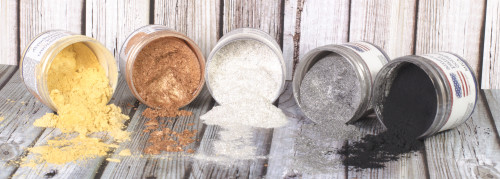
Not unlike Metallix paint, add some shine to your piece with MICA powder. MICA powders can be added to glazes, paints, wax or top coat, making them quite versatile and adaptable to the project you are working on. APC offers 5 different colors, so pick up a shiny shade today and really make your project pop!
Venetian Plaster
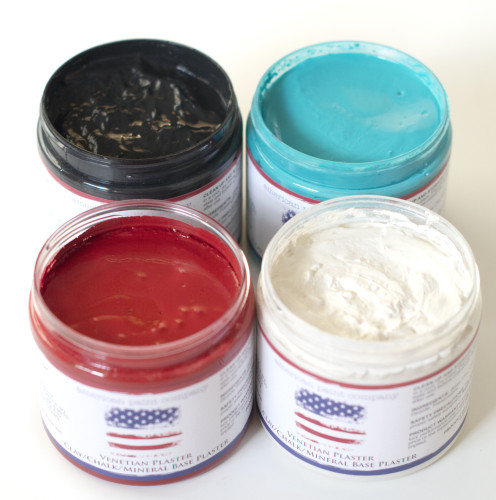
Venetian Plaster a very thick paint/plaster that is easy to work with and leaves a beautifully raised 3D finish. It works great with stencils, rollers and can be troweled onto a surface. It comes in 4 colors.
Additional Resources for Beginners
Here are some resources and downloads you might find useful if you’re just getting started. (add links to all below)
- How To Guide – check out our free ‘how to guide’ and download it here. The how to guide will walk you through how to use all of our products and it’s perfect for beginners who are trying to familiarize themselves with APC.
- APC Color Book – if you haven’t yet downloaded this book, do it now! It’s our most popular book, downloaded thousands and thousands of times! You’ll get over 150 project ideas, sorted by color. It will not only give you ideas and inspiration, but help you decide on what colors to use on your projects. http://americanpaintcompany.pages.ontraport.net/color-book
- Take a Class – Sign up here to take a class! Taking a workshop can help you learn the basics and give you the confidence you need to take on bigger projects at home! Rather than jumping right into your kitchen cupboards, we recommend starting out on a smaller project first to get the hang of it.
- Join our Community – Check out our Facebook Group here where we share projects, ideas, guides, tips and inspiration.
- Submit Your Project – once you finish your first project, we’d LOVE to see it! Plus, just by submitting pictures and telling us about your project, you’ll enter to win over $100 worth of free stuff!

Hi Jim, just lightly wipe the project down with a dry cloth before applying the sealer.